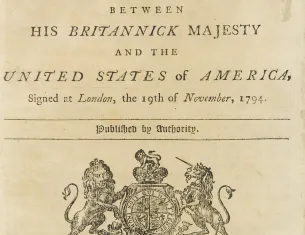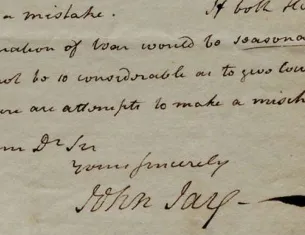John Jay

John Jay, by Gilbert Stuart and John Trumbull, ca. 1818 (National Portrait Gallery, Smithsonian Institution)
John Jay (1745–1829) was born in New York and attended King’s College before studying law. As a patriot, he joined New York’s committee of correspondence, was a delegate to the Continental Congress (serving as president in 1778–1779), worked on New York State’s constitution, and was appointed chief justice of New York State. Jay went on to take a variety of diplomatic roles, including negotiating and signing the Treaty of Paris, which ended the Revolutionary War.
From 1784 to 1789, Jay was Secretary of Foreign Affairs under the Articles of Confederation. Jay wrote five of the Federalist Papers, a landmark collection of essays supporting the ratification of the US Constitution. (The other authors were Alexander Hamilton and James Madison.) In 1789 Jay accepted Washington’s appointment as the first Chief Justice of the United States and served until 1795. During that time he negotiated a controversial agreement, called Jay’s Treaty, with Britain. He subsequently served as the governor of New York from 1795 to 1801.


